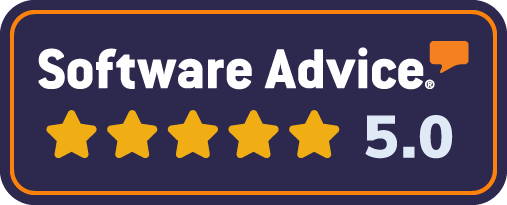TL;DR
Automation is transforming IT management, helping companies cut costs, improve efficiency, and enhance security. Yet, many organizations still rely on manual workflows, increasing the risk of errors, inefficiencies, and unnecessary expenses.
✅ Workflow automation is a priority: 81% of tech leaders rank it as essential.
✅ IT cost reduction is key: 71% of Chief Procurement Officers (CPOs) focus on cost savings.
✅ Automated asset tracking saves money: Companies reduce inventory costs by up to 50% with real-time tracking.
✅ Automated patch management reduces risks: Saves 70% on patch deployment costs while minimizing security breaches.
So, how can IT teams leverage automation to optimize operations and reduce costs? Let’s dive in.
The growing impact of workflow automation
Technology and AI advancements are revolutionizing IT management, making automation a game-changer for cost savings and productivity. A Gartner survey highlights the increasing adoption of workflow automation:
📌 81% of tech leaders consider automation a top priority.
📌 91% of IT leaders report increased automated workflows in daily tasks.
📌 80% of IT teams are satisfied with existing automation solutions.
📌 90% of decision-makers plan to expand automation in the near future.
Companies are now dedicating up to 10% of their IT budgets to automation tools, recognizing their role in streamlining processes, reducing costs, and enhancing security.
How automation transforms IT management
Workflow automation eases burden for IT managers by simplifying complex tasks and lightening their workload, especially in procurement from purchasing to end-of-life management. It introduces various solutions that streamline IT processes, making them simpler, more manageable, and cost-effective. The fact that 71% of Chief Procurement Officers (CPOs) prioritize cost reduction, as revealed in Deloitte’s 2023 Global CPO Survey, highlights just how crucial workflow automation is in shaping procurement strategies.
1. Simplifying procurement processes
Procurement is one of the most time-consuming and error-prone areas in IT. Manual tasks like invoice processing, supplier selection, and contract approvals slow operations and increase costs. Automating procurement workflows eliminates inefficiencies, ensuring compliance and better spending control.
Key benefits of procurement automation:
- Cost savings: Automated procurement reduces supplier payment costs by 20% (Gartner).
- Better compliance: Controls non-catalog spending and improves vendor selection.
- Faster approvals: Cuts approval time by up to 60% (Forrester Research).
- Stronger vendor relationships: Streamlines vendor onboarding and improves communication.
Success stories:
- Urban Company utilizes procurement management software to streamline SaaS procurement, saving 100 hours and achieving a 15x ROI.
- Accenture leverages AI and analytics to streamline procurement, resulting in significant cost savings and improved account payable accuracy.
Have you read? What happens to my work computer when I stop using it and return it to IT?
2. Optimizing IT asset management
Efficient asset management helps IT teams control costs, track usage, and extend device lifecycles. Without automation, businesses risk overstocking inventory, increasing operational expenses, and losing visibility into asset performance.
Key benefits of asset management automation:
- Real-time asset tracking: Reduces inventory costs by 50% (Deloitte).
- Usage monitoring: Cuts 30% of IT equipment costs through better resource allocation (Gartner).
- Automated renewals & retirement: Lowers asset management costs by 40% annually (Forrester).
Beyond financial savings, extending device lifecycles benefits sustainability efforts. Upgrading instead of replacing hardware helps reduce e-waste, while proper recycling minimizes environmental impact.
3. Efficient patch management for security
Manually deploying software patches and managing vulnerabilities is time-intensive and risky. Delayed updates leave businesses exposed to security threats, while non-compliance increases the risk of regulatory fines.
Key benefits of automated patch management:
- Saves 70% on patch deployment costs (Gartner).
- Reduces vulnerability-related expenses by 50% (Ponemon Institute).
- Speeds up compliance reporting, reducing audit costs by 80% (IDC).
By automating patch deployment, vulnerability assessments, and compliance tracking, businesses reduce security risks, lower costs, and maintain regulatory compliance.
4. Automating end-of-life IT asset management
Disposing of retired IT assets requires compliance with security, environmental, and regulatory standards. Without a structured process, businesses risk data breaches and financial penalties.
Key benefits of automated end-of-life management:
- Secure disposal: Prevents data breaches and ensures regulatory compliance, saving 30% on penalties (Industry Survey).
- Automated data erasure: Reduces recovery and legal costs by 40%.
- E-waste reduction: Ensures proper recycling, minimizing environmental impact.
Instead of manual tracking, automating IT asset retirement ensures secure and responsible disposal, protecting company data and reducing financial risks.
How Velory helps
Automation can seem overwhelming without the right tools. That’s where Velory comes in, providing an integrated asset management platform that:
- Automates procurement, tracking, vendor management, and device retirement.
- Reduces IT lifecycle costs through smart automation tools.
- Ensures sustainability by maximizing asset utilization and minimizing e-waste.
With Velory, IT teams gain full control over asset management while cutting costs and improving efficiency. So, ask yourself: Is your IT team ready to optimize processes and reduce costs?
Read more: Empower your employees with the freedom of choice




.png)




